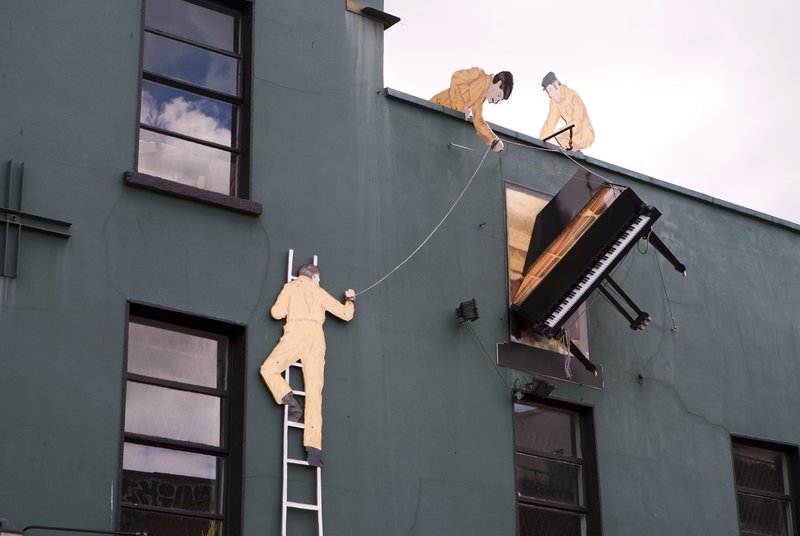Long-Term Sofa Storage Made Easy with Pro Secrets
Protecting your beloved sofa during long-term storage can seem daunting. But with the right expert strategies, you can ensure your furniture stays in pristine condition, ready for use whenever you need it. This comprehensive guide unveils professional tips and tricks for effortless and effective long-term sofa storage.

Why Proper Sofa Storage Solutions Matter
Whether you're relocating, renovating, or simply need to free up space, your sofa is often one of your most significant--and valuable--furniture pieces. Appropriate sofa storage methods not only protect your investment but also maintain your comfort and style preferences down the line.
- Prevents Mold and Mildew: Improper storage can trap moisture, leading to unpleasant odors and potential health hazards.
- Avoids Physical Damage: Scratches, dents, or warping are common if furniture isn't handled and stored correctly.
- Deters Pests: Sofas can attract unwanted pests if not properly sealed and prepared for storage.
- Maintains Resale Value: Flawlessly-stored sofas retain their appeal and resale value for years to come.
Pro Secrets to Effortless Long-Term Storage for Sofas
Ready to unlock insider secrets for long-term sofa storage? Let's dive into the steps that the pros follow to keep sofas looking and feeling like new:
1. Clean Your Sofa Thoroughly
Before you even think about storing your sofa, it's crucial to clean it properly. Dirt, crumbs, and body oils can become permanent stains or attract pests during storage.
- Vacuum Upholstery: Use a high-power vacuum with upholstery attachments to remove all loose debris.
- Spot Clean: For fabric sofas, use an appropriate upholstery cleaner. Leather sofas benefit from a dedicated leather cleaner and conditioner to keep the material supple.
- Remove Cushions: Clean both sides of every cushion and allow them to air dry completely to prevent moisture buildup.
- Let it Dry: Never store a damp sofa. Allow 24-48 hours of thorough drying to avoid mold or mildew during storage.
2. Take Apart When Possible
Many modern sofas are designed for easy disassembly, allowing for more efficient and safe storage. Not only does this save space, but it also reduces the chances of distortion and breakage.
- Remove Legs and Detachable Arms: Unscrew wooden or metal legs and wrap them in bubble wrap before placing in a labeled bag.
- Separate Sectionals: Store each section separately, labeling connectors and joints for easy reassembly.
3. Protect with Proper Packing Materials
Optimal packing materials are a hallmark of professional long-term sofa storage. The right supplies minimize risks from dust, moisture, and scratches.
- Furniture Covers: Invest in breathable fabric covers or moving blankets. Avoid using non-breathable plastic for extended periods as it can lock in moisture and encourage mold growth.
- Bubble Wrap & Cardboard: Add extra protection around sharp corners and exposed wood or metal accents.
- Tape & Plastic Wrap: Use stretch wrap to hold protective materials in place but never directly on the upholstery as it can cause damage.
4. Choose the Right Storage Unit
One of the top secrets of successful sofa storage lies in your choice of storage space. Not all storage facilities are created equal--here's what to look for:
- Climate Control: Opt for a climate-controlled storage unit to guard against extreme temperatures and humidity fluctuations. This is essential for fabrics, leather, and wooden frames.
- Cleanliness & Security: Select a reputable provider with clean, secure, and pest-controlled storage units.
- Accessibility: Make sure you can access your unit if you ever need to check on or retrieve your sofa.
5. Store Off the Floor
Storing your sofa directly on the storage unit floor can expose it to dust, pests, and potential moisture from flooding. Elevate your investment--literally!
- Pallets: Use wooden pallets to raise your sofa several inches off the ground for additional air circulation and spill protection.
- Plastic Sheeting: Place a waterproof plastic sheet or tarp under the pallets for added peace of mind.
6. Mind the Orientation
The way you position your sofa in storage matters. Laying it on its side or stacking items on top can cause irreversible structural issues.
- Keep Upright: Always store sofas upright, resting on their feet or base.
- No Heavy Stacking: Avoid placing boxes or other items on top of your sofa to maintain its shape.
7. Pest Prevention Tactics
Even pristine storage facilities can occasionally attract pests. Implement extra safeguard measures:
- Natural Repellents: Dryer sheets, cedar blocks, or lavender sachets can help deter critters without risk of staining.
- Avoid Food Near Storage: Never store food products or crumbs with your couch as these are a magnet for insects and rodents.
8. Periodic Check-Ins
If possible, plan periodic visits to your storage unit. Regular checks can help catch and address any issues, such as moisture or pests, before they lead to irreversible sofa damage.
- Inspect Covers: Ensure furniture covers remain intact and dry.
- Air Out Periodically: If allowed, briefly remove covers every few months for ventilation.
Common Long-Term Sofa Storage Mistakes to Avoid
- Skipping the Clean: Storing a dirty sofa will only worsen stains and odors over time.
- Improper Packing: Directly wrapping sofas in plastic can lead to condensation, creating the ideal environment for mold growth.
- Ignoring Climate Control: Unregulated units expose sofas to extreme temperature and humidity cycles, damaging fabrics, wood, and leather.
- Overloading: Don't use your sofa as a makeshift shelf in your storage unit-it can lose its support and develop permanent sag.
Additional Tips for Various Sofa Types
Fabric Sofas
- Fabric Protection: Apply a fabric protector spray after cleaning and before packing to add another layer of defense against dust and stains.
- Avoid Direct Sunlight: Even when stored, exposure to any available light can fade upholstery over time.
Leather Sofas
- Conditioning: Invest a little extra time in applying high-quality leather conditioner after a thorough cleaning.
- Ventilation Matters: Use only breathable covers--plastic will cause leather to sweat and crack.
Wood-Framed Sofas
- Wrap Carefully: Bubble wrap or thick blankets protect wooden arms and legs from dings and scratches.
- Humidity Watch: Maintain stable humidity to prevent wood shrinkage, warping, or expansion.
FAQs about Long-Term Sofa Storage
How Long Can You Store a Sofa?
With correct long-term storage methods for sofas, you can safely store a couch for several months or even years. The keys are pre-storage cleaning, proper protection, and climate-controlled environments.
Can All Sofas Be Disassembled for Storage?
While many modern sofas offer removable legs or modular sections, not all furniture easily comes apart. In such cases, focus on superior packing and covering, and ensure the storage unit is large enough to accommodate the sofa in its natural orientation.
What's the Ideal Storage Temperature for Sofas?
The optimal range is typically between 55°F and 80°F (13°C-27°C) with humidity between 30-50%. This preserves both fabric and leather, and protects wood from swelling or cracking.
How Should You Prepare a Sofa for Storage in a Garage?
If a garage is your only option, invest in extra moisture control--think heavy-duty plastic sheeting, silica gel packets, and regular pest deterrents. Always raise your sofa above the ground and use only breathable covers.
Are Shrink Wraps Safe for Sofas?
Shrink wrap can be useful for short moves but is not recommended for long-term sofa storage, especially for leather or fabric couches. Use it only to secure moving pads or blankets, never directly on the sofa's surface.
DIY vs. Professional Storage Services
If you prefer a hands-off experience, consider professional furniture storage services. These companies often come with perks such as heavy-duty packing supplies, climate control, pickup and delivery, and regular monitoring.
- DIY: Cost-effective but requires careful adherence to all the steps highlighted above. Ideal for short to mid-term storage.
- Professional Services: Best for long-term or ultra-valuable pieces. Offers convenience and often guarantees against damage.

Recap: Long-Term Sofa Storage Checklist
- Vacuum, clean, and dry the sofa thoroughly.
- Disassemble and label parts when possible.
- Wrap with breathable, protective covers.
- Select a climate-controlled, secure storage unit.
- Raise the sofa off the ground and avoid direct contact with other items.
- Position the sofa upright--never stacked or on its side.
- Implement pest prevention techniques.
- Check periodically for early intervention against issues.
Final Thoughts on Long-Term Storage for Sofas
Long-term sofa storage doesn't need to be stressful. By adopting these expert-level secrets, you ensure your cherished furniture remains as comfortable and appealing as the day you stored it. By following these steps, not only do you protect your sofa's beauty and structure, but you also save time, money, and effort when it's time to bring it back into your space. Choose the right strategies, and enjoy complete peace of mind with your long-term sofa storage journey!



